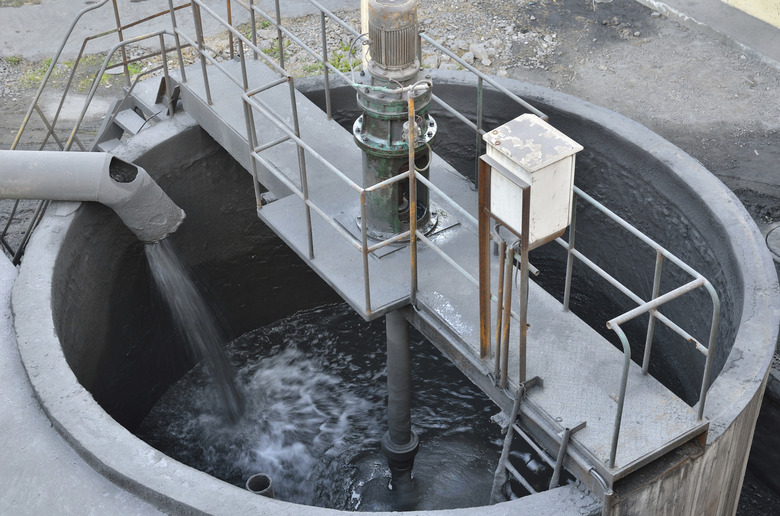How To Calculate Loading Rates
Waste-water treatment systems use loading rates as a measure for determining whether the system will have a tendency to clog. Recommended loading rates exist for different types of material such as sands, soil and domestic sewage. Hydraulic and organic loading rates can both be used as units of measurement. Separate calculations are needed for hydraulic and loading-rate measurements. You can calculate loading rates with a few basic steps.
Step 1
Calculate the hydraulic loading rate with the formula: Hydraulic loading rate = Design flow (gal/day) / Area (feet ^2). Design flow is the volume of waste water per day.
Step 2
Calculate the organic loading with the formula: Organic matter = (BOD5 (mg/l) * 3.785 l/gal) / 453,600 mg/lb. BOD5 is the measure of oxygen needed to degrade organic matter dissolved in the the waste water over a period of 5 days.
Step 3
Calculate the organic loading rate with the formula: Organic loading rate (lbs BOD5/ft2/day) = (Organic matter (lbs BOD5/gal). * Design Flow (gal/day) )/ Area (ft^2)
Cite This Article
MLA
Turner, Paige. "How To Calculate Loading Rates" sciencing.com, https://www.sciencing.com/how-7480284-calculate-loading-rates/. 9 January 2018.
APA
Turner, Paige. (2018, January 9). How To Calculate Loading Rates. sciencing.com. Retrieved from https://www.sciencing.com/how-7480284-calculate-loading-rates/
Chicago
Turner, Paige. How To Calculate Loading Rates last modified March 24, 2022. https://www.sciencing.com/how-7480284-calculate-loading-rates/
